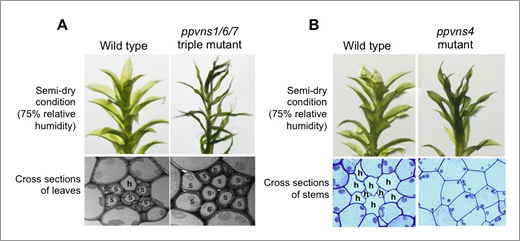Research outcomes
Aacquisition of a programmed cell death system was the key to plants coming ashore!
- The moss mechanism that creates cells for carrying water and supporting structure is clarified for the first time -
The research group of Prof. Taku Demura and his colleagues in Graduate School of Biological Sciences, NAIST, Dr. Misato Ohtani, Dr. Kiminori Toyooka and their colleagues in RIKEN Center for Sustainable Resource Science, and Prof. Mitsuyasu Hasebe and his colleagues in National Institute for Basic Biology successfully revealed the molecular mechanisms to develop cells specialized for water conduction or support in the moss Physcomitrella patens. They experimentally showed the importance of induction of programed cell death and utilization of remained cell structures, i.e. cell wall structures, after cell death, in the differentiation of water-conducting and supporting cells of the moss. These findings support the hypothesis that effective water-conducting systems developed in early land plants enabled the transition of plants from an aqueous environment to land. Furthermore, the works indicated that the molecular basis to produce woody cells, xylem vessel cells and fiber cells, in which woody biomass is biosynthesized, are widely conserved among land plants. Thus, the results reported here would lead to the development of novel biotechnologies to increase woody biomass production.

Fig.1 Mutants of ppvns genes.
[ Press Release ] March 24, 2014
( January 26, 2015 )
